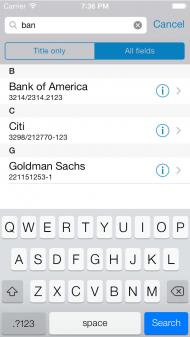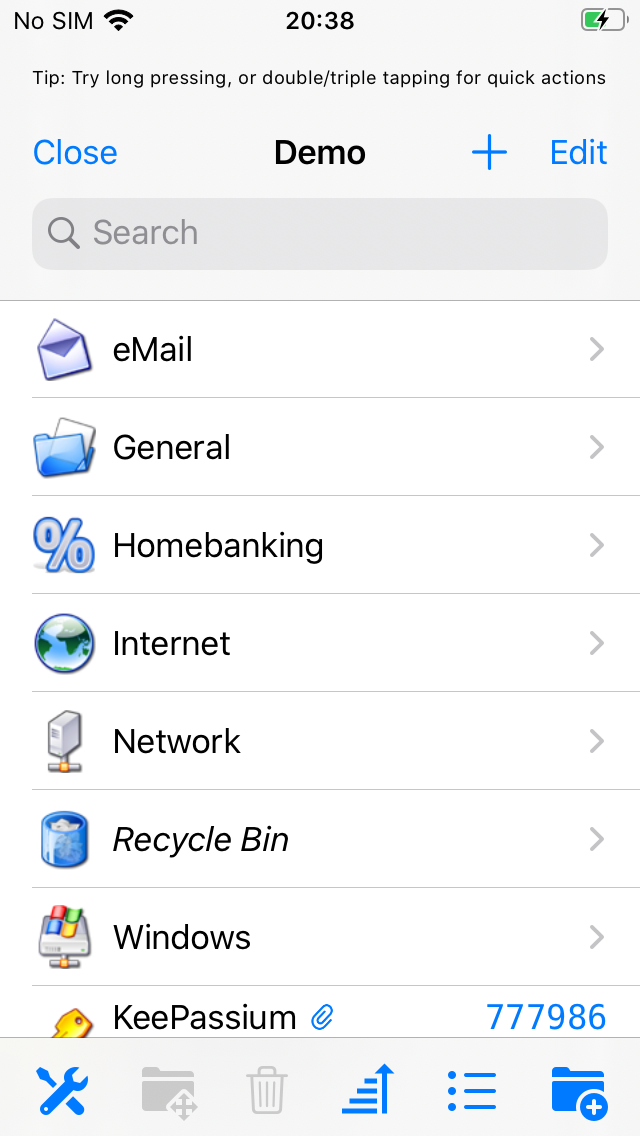- METHODS
- PwSafe uses the same file format as the award-winning Password Safe PC open source PC app. Password Safe has been originally created by security guru Bruce Schneier and nowadays is maintained by Rony Shapiro. Since it has been around as an open source project for more than a decade, it has been extensively reviewed by many experts.
- Whether the answer is one or hundreds, Password Safe allows you to safely and easily create a secured and encrypted user name/password list. With Password Safe all you have to do is create and remember a single 'Master Password' of your choice in order to unlock and access your entire user name/password list. Security starts with you, the user. Keeping written lists of passwords on scraps.
Pwsafe.exe has 3 known versions, the most recent one is 3, 33, 0, g68b1969. Pwsafe.exe is run as a standard windows process with the logged in user's account privileges. When the program is installed, it will add a shortcut pointer in the Start Menu which will execute the file as a process upon a user login. The average file size is about 3.84 MB.
Crypt::PWSafe3 - Read and write Passwordsafe v3 files
Crypt::PWSafe3 provides read and write access to password database files created by Password Safe V3 (and up) available at http://passwordsafe.sf.net.

new()
The new() method creates a new Crypt::PWSafe3 object. Any parameters must be given as hash parameters.
Mandatory parameters:
Specifies the password safe (v3) file. If it exists it will be read in. Otherwise it will be created if you call save().
The password required to decrypt the password safe file.
Optional parameters:
Specifies the user who saves the password safe file. If omitted the environment variable USER will be used when calling save().
Specifies which program saved the password safe file. If omitted, the content of the perl variable $0 will be used, which contains the name of the current running script.
If set to 0, new() will fail if the file doesn't exist, otherwise it will try to create it. Enabled by default.
The optional parameters will become header fields of the password safe file. You can manually set/override more headers. See section addheader() for more details.
getrecords()
Returns a list of all records found in the password safe file. Each element is an Crypt::PWSafe3::Record object.
A record object is identified by its UUID4 value, which is a unique identifier. You can access the uuid by:
Accessing other record properties works the same. For more details, refer to Crypt::PWSafe3::Record.
Note: record objects returned by getrecords() are still associated with the Crypt::PWSafe3 object. So, if you modify a field of such a record, the change will be populated back into the vault. Of course you'd still need to save it.
Sample:
However, it's also possible to use the modifyrecord() method, see below.
looprecord()
Returns a list of UUIDs of all known records. You can use this list to iterate over the records without copying them and optionally changing them in place.
Example: Can 4gb ram run fortnite.
modifyrecord(uuid, parameter-hash)
Modifies the record identified by the given UUID using the values of the supplied parameter hash.
Example:
The parameter hash may contain any valid record field type with according values. Refer to Crypt::PWSafe3::Record for details about available fields.
newrecord(parameter-hash)
Create a new record. The UUID of the record will be generated automatically. Refer to Crypt::PWSafe3::Record for details about available fields.
addrecord(Crypt::PWSafe3::Record object)
Iphone backup extractor 7 4 5 download free. Add a record to the vault. The record must be an Crypt::PWSafe3::Record object.
deleterecord(uuid)
Delete the record identified by the given UUID.
save([parameter-hash])
Save the current password safe vault back to disk. Lights out 3 2 0 2. Google chrome installer for windows 10 64 bit.
If not otherwise specified, use the same file and password as we used to open it initially. If the file doesn't exist it will be created.
You may specify another filename and password here by using a parameter hash.
Example:
Please note, that the vault will be written to a temporary file first, then this temporary file will be read in and if that works, it will be moved over the destination file. This way the original file persists if the written database gets corrupted by some unknown reason (a bug for instance). Anytrans for ios 6 3 6 (20180705) download free.

new()
The new() method creates a new Crypt::PWSafe3 object. Any parameters must be given as hash parameters.
Mandatory parameters:
Specifies the password safe (v3) file. If it exists it will be read in. Otherwise it will be created if you call save().
The password required to decrypt the password safe file.
Optional parameters:
Specifies the user who saves the password safe file. If omitted the environment variable USER will be used when calling save().
Specifies which program saved the password safe file. If omitted, the content of the perl variable $0 will be used, which contains the name of the current running script.
If set to 0, new() will fail if the file doesn't exist, otherwise it will try to create it. Enabled by default.
The optional parameters will become header fields of the password safe file. You can manually set/override more headers. See section addheader() for more details.
getrecords()
Returns a list of all records found in the password safe file. Each element is an Crypt::PWSafe3::Record object.
A record object is identified by its UUID4 value, which is a unique identifier. You can access the uuid by:
Accessing other record properties works the same. For more details, refer to Crypt::PWSafe3::Record.
Note: record objects returned by getrecords() are still associated with the Crypt::PWSafe3 object. So, if you modify a field of such a record, the change will be populated back into the vault. Of course you'd still need to save it.
Sample:
However, it's also possible to use the modifyrecord() method, see below.
looprecord()
Returns a list of UUIDs of all known records. You can use this list to iterate over the records without copying them and optionally changing them in place.
Example: Can 4gb ram run fortnite.
modifyrecord(uuid, parameter-hash)
Modifies the record identified by the given UUID using the values of the supplied parameter hash.
Example:
The parameter hash may contain any valid record field type with according values. Refer to Crypt::PWSafe3::Record for details about available fields.
newrecord(parameter-hash)
Create a new record. The UUID of the record will be generated automatically. Refer to Crypt::PWSafe3::Record for details about available fields.
addrecord(Crypt::PWSafe3::Record object)
Iphone backup extractor 7 4 5 download free. Add a record to the vault. The record must be an Crypt::PWSafe3::Record object.
deleterecord(uuid)
Delete the record identified by the given UUID.
save([parameter-hash])
Save the current password safe vault back to disk. Lights out 3 2 0 2. Google chrome installer for windows 10 64 bit.
If not otherwise specified, use the same file and password as we used to open it initially. If the file doesn't exist it will be created.
You may specify another filename and password here by using a parameter hash.
Example:
Please note, that the vault will be written to a temporary file first, then this temporary file will be read in and if that works, it will be moved over the destination file. This way the original file persists if the written database gets corrupted by some unknown reason (a bug for instance). Anytrans for ios 6 3 6 (20180705) download free.
getheader(name)
Returns a raw Crypt::PWSafe3::HeaderField object. Refer to Crypt::PWSafe3::HeaderField for details how to access it.
addheader(object)
Adds a header field to the password safe database. The object parameter must be an Crypt::PWSafe3::HeaderField object.
If the header already exists it will be replaced.
Refer to Crypt::PWSafe3::HeaderField for details how to create new ones .
T.v.Dein
Report bugs to http://rt.cpan.org/NoAuth/ReportBug.html?Queue=Crypt-PWSafe3.
Subclasses:
Password Safe Homepage: http://passwordsafe.sourceforge.net/
Another (read-only) perl module: Crypt::Pwsafe
A python port of Password Safe: http://www.christoph-sommer.de/loxodo/ Many thanks to Christoph Sommer, his python library inspired me a lot and in fact most of the concepts in this module are his ideas ported to perl.
Copyright (c) 2011-2016 by T.v.Dein .
This program is free software; you can redistribute it and/or modify it under the same terms of the Artistic License 2.0, see: http://www.perlfoundation.org/artistic_license_2_0
Crypt::PWSafe3 Version 1.22.
To install Crypt::PWSafe3, copy and paste the appropriate command in to your terminal.
For more information on module installation, please visit the detailed CPAN module installation guide.
What is pwSafe?
pwSafe is a very secure database of online credentials (username, password, URL, .). It's up to you to make its content match your actual credentials. Microsoft word mac windows compatibility.
It's also up to you to fill out the forms which ask for your credentials with information from pwSafe. pwSafe offers many features such as Smart Pasteboard and a Safari action extension on iOS to help you typing long passwords and usernames.
How do I use it?
Start creating a new safe. On iOS, tap the + button and choose 'Create Safe in iCloud'. On the Mac, click the button which says 'New safe.' or press CMD + N. You'll be asked to give your safe a name and to enter a its password twice. Take good note of that password, as there's no way to recover it from our side (see our FAQ to know why).
After creating your safe, add an entry. On iOS, tap on the safe name, then tap the + button to the lower right. On the Mac, click the 'New Entry' button. Fill up the details anyway you like it. Except for the password and URL fields, the other ones may be used however you prefer. On IOS, tap Done to save your entry. On the Mac, hit CMD + S or use the 'File' menu to save your safe.
Pwsafe 3 0 M
Now, lock your safe. On iOS, tap the combination lock button to the bottom. On the Mac, either click the lock button to the bottom or press CMD + L. Next, try unlocking it. On iOS, tap the safe name and enter your password. On the Mac, if you closed the window, find the safe on the Welcome screen or using the Finder. The safe is just a document like any other on your computer.
Pwsafe.exe
Finally, copy the password to use it somewhere else. On iOS, after unlocking your safe, tap 'All Items', locate your entry and tap anywhere on it except the small 'i' button. On the Mac, either double click on your entry or click on it and press CMD + P. Now, go to another app, any app, and paste your password. On the Mac, press CMD + V. On iOS, tap the text field and chose the 'Paste' option on the popover menu.

